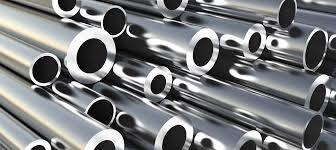Imagine steel as a formidable fortress, seemingly impenetrable yet harboring unforeseen vulnerabilities. As you navigate through the intricate world of steel structures, you begin to realize that beneath its robust facade lies a complex web of weaknesses waiting to be uncovered.
Understanding these vulnerabilities is not just crucial but imperative in ensuring the safety and longevity of any steel-based construction. Stay tuned to discover the hidden intricacies that could make all the difference in the integrity of your steel structures.
Common Types of Steel Weaknesses
When steel is subjected to certain conditions, it can exhibit various weaknesses that compromise its structural integrity. One common type of weakness seen in steel is corrosion. This occurs when the steel is exposed to moisture and oxygen, leading to rust formation that weakens the material over time.
Another prevalent issue is fatigue, where repeated stress or loading cycles can cause cracks to develop and propagate within the steel structure. Additionally, steel is susceptible to brittle fracture, especially in cold temperatures, where it can fail suddenly under high stress without warning.
Improper welding techniques can also introduce weaknesses in steel structures. Inadequate fusion or the presence of weld defects can create points of weakness that compromise the overall strength of the steel. Furthermore, hydrogen embrittlement is a critical concern, where hydrogen atoms penetrate the steel, causing it to become brittle and prone to cracking. Understanding these common types of steel weaknesses is crucial for ensuring the safety and longevity of steel structures.
Factors Contributing to Steel Vulnerabilities
Identifying the factors that contribute to steel vulnerabilities is essential for enhancing structural resilience and longevity. One key factor is environmental exposure. Steel structures exposed to harsh weather conditions such as high humidity, saltwater, or extreme temperatures are more prone to corrosion and degradation.
Additionally, inadequate maintenance practices can accelerate steel weaknesses. Failure to regularly inspect for rust, cracks, or other signs of deterioration can lead to unnoticed vulnerabilities that may compromise the integrity of the structure over time.
Poor design choices, such as using the wrong type of steel for a specific application or not accounting for potential stress factors, can also contribute to steel vulnerabilities. Furthermore, improper welding techniques or subpar materials used during construction can create weak points in the steel structure.
Understanding these factors and taking proactive measures to address them can help mitigate steel vulnerabilities and ensure the long-term durability of steel structures.
Detecting Steel Weaknesses: Signs and Symptoms
To spot potential weaknesses in steel structures, pay close attention to specific signs and symptoms that indicate underlying issues. One of the key indicators of steel weaknesses is visible corrosion or rust on the surface of the structure. Rust weakens the steel, compromising its structural integrity over time.
Additionally, any unusual deformations, such as bending, warping, or buckling of steel components, signal potential weaknesses. These deformations may be a result of overloading, wear and tear, or structural fatigue.
Another sign to watch out for is cracking in the steel structure. Cracks can form due to excessive stress, poor welding, or material defects, all of which can lead to significant vulnerabilities.
Furthermore, if you notice any unusual vibrations, noises, or movements in the steel structure, it could indicate underlying weaknesses that need to be addressed promptly.
Impact of Steel Weaknesses on Structural Integrity
Spotting steel weaknesses is crucial, but understanding their impact on structural integrity is equally important. When steel components within a structure exhibit weaknesses, such as corrosion or material defects, the overall stability and safety of the building can be compromised. These weaknesses can lead to structural failures, putting occupants at risk and potentially causing significant damage.
One of the primary consequences of steel weaknesses is a decrease in load-bearing capacity. Steel is known for its strength and durability, but when weaknesses are present, the ability of the material to support heavy loads is diminished. This can result in structural deformations, cracks, or even collapses in severe cases.
Moreover, steel weaknesses can also accelerate the progression of other forms of deterioration, such as rust or fatigue cracks. These secondary effects can further weaken the structure and shorten its lifespan. Therefore, addressing steel weaknesses promptly and effectively is essential to maintaining the structural integrity of buildings and ensuring the safety of those who inhabit them.
Strategies for Mitigating Steel Vulnerabilities
When addressing steel vulnerabilities, implementing proactive maintenance measures can significantly enhance the structural resilience of buildings. Regular inspections to detect corrosion, cracks, or other signs of deterioration are crucial for identifying weaknesses early on. By promptly addressing these issues through repairs or replacements, you can prevent further damage and ensure the stability of the structure.
Another effective strategy for mitigating steel vulnerabilities is applying protective coatings or corrosion inhibitors to the steel components. These coatings act as a barrier, shielding the steel from environmental factors that could lead to corrosion. Additionally, proper ventilation and drainage systems can help prevent moisture buildup, reducing the risk of rust formation.
Furthermore, incorporating redundancy in structural design can help distribute loads more effectively, reducing the strain on individual steel elements and minimizing the impact of potential vulnerabilities. By diversifying the load-bearing capacity across multiple components, you can enhance the overall resilience of the structure against unforeseen events. Remember, proactive maintenance and strategic interventions are key to mitigating steel vulnerabilities and ensuring the long-term durability of buildings.
Conclusion
Now that you understand the common types of steel weaknesses, factors contributing to vulnerabilities, and how to detect them, you can take proactive steps to mitigate these risks.
By addressing steel weaknesses early on, you can ensure the structural integrity of your projects and prevent potential disasters.
Stay vigilant and prioritize regular inspections and maintenance to keep your steel structures strong and secure.
